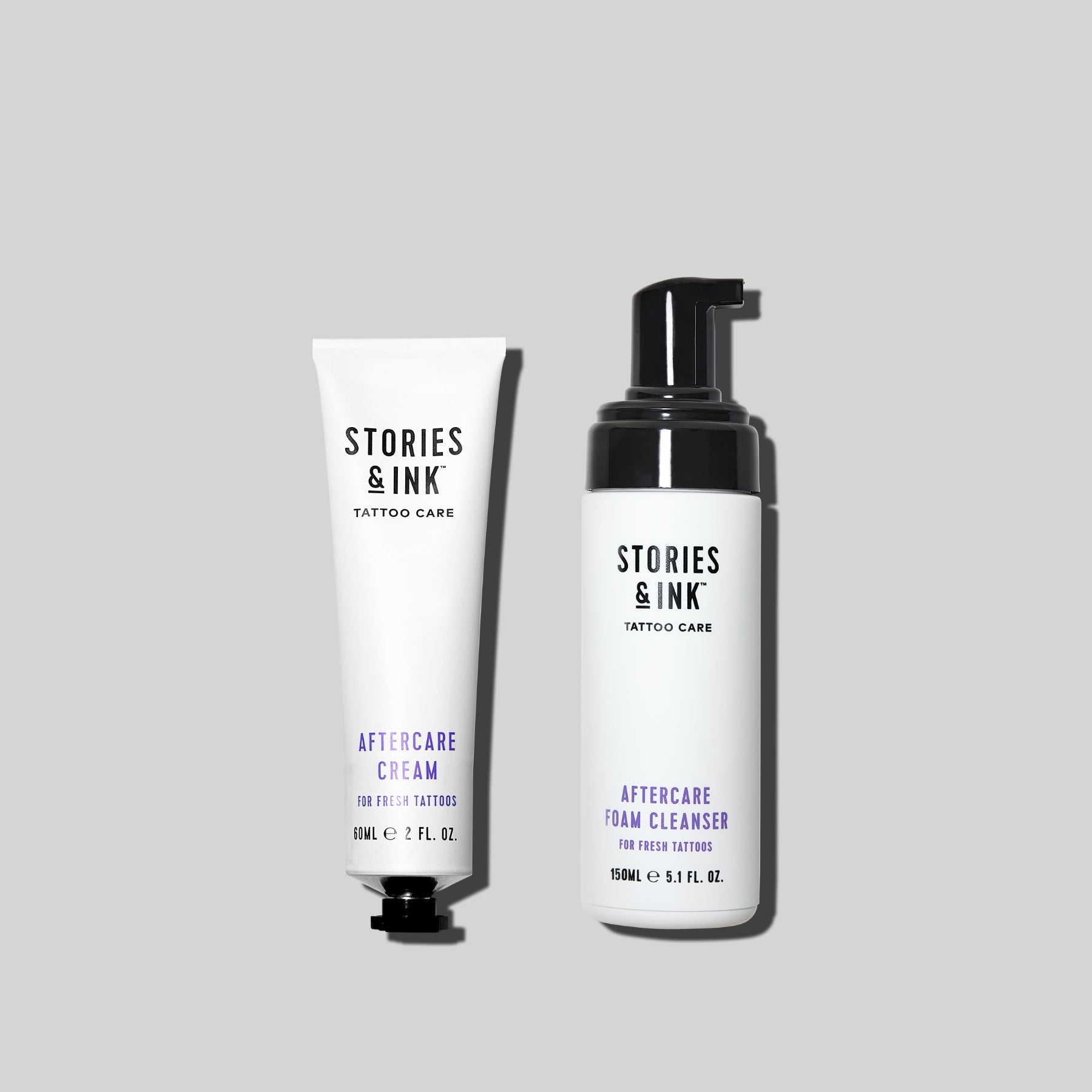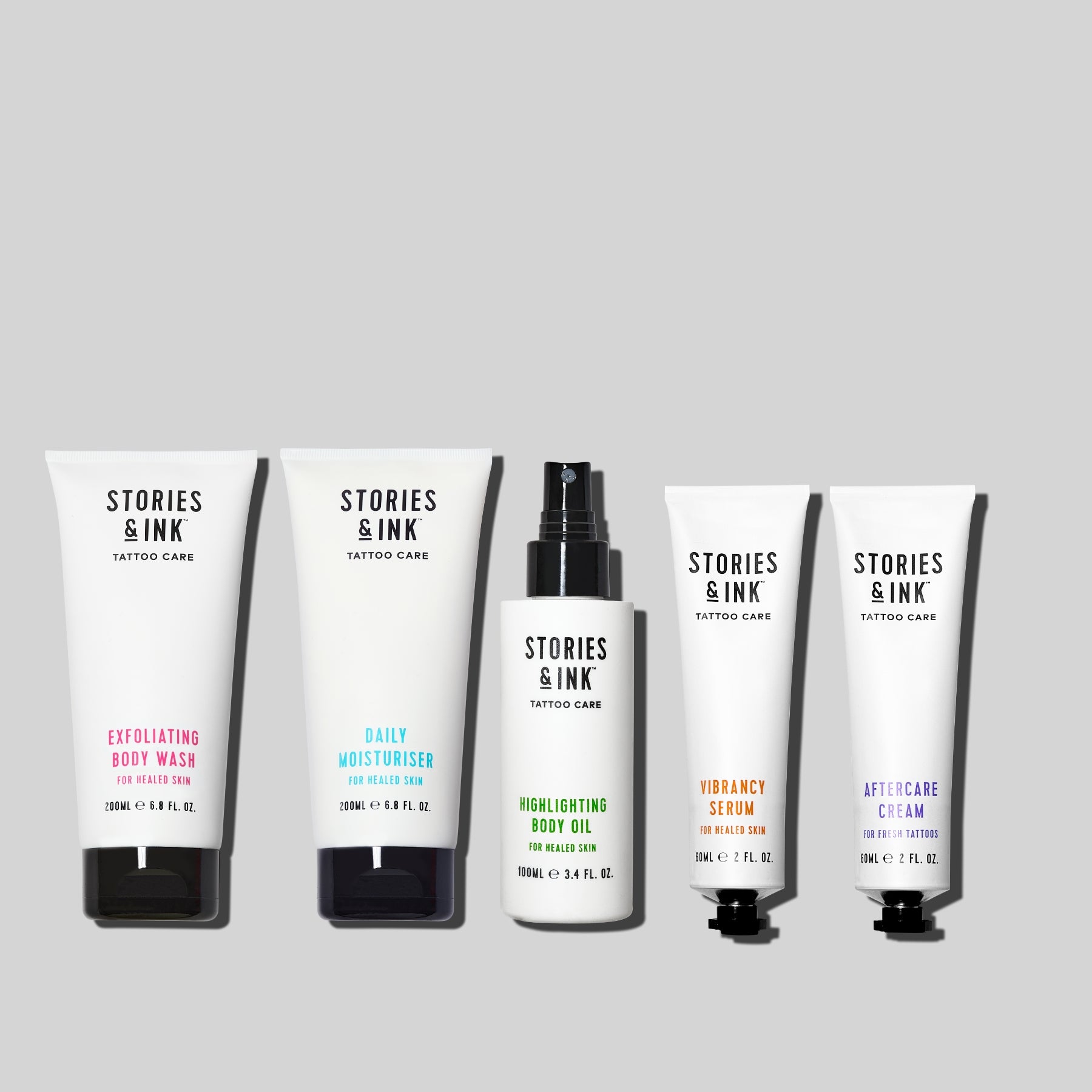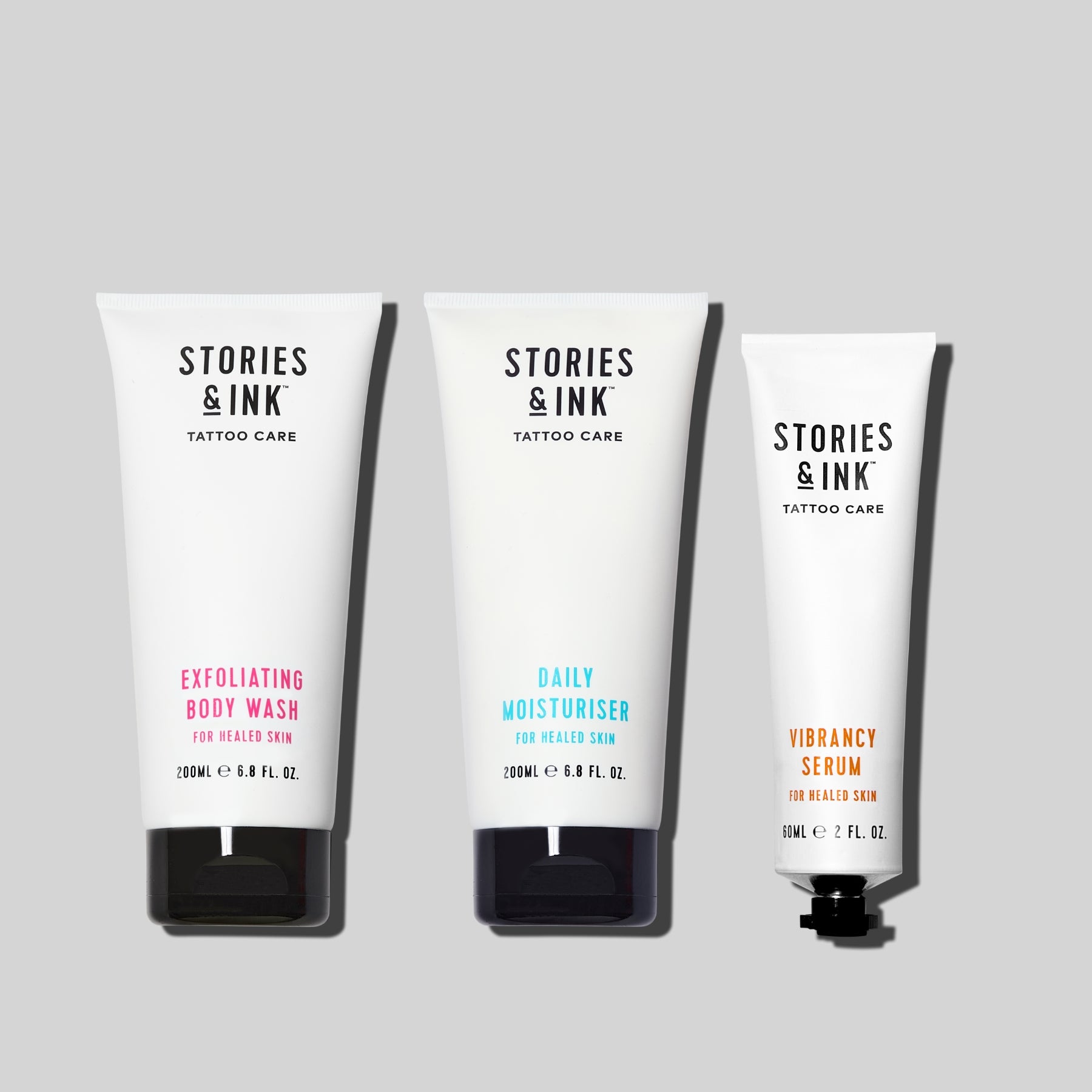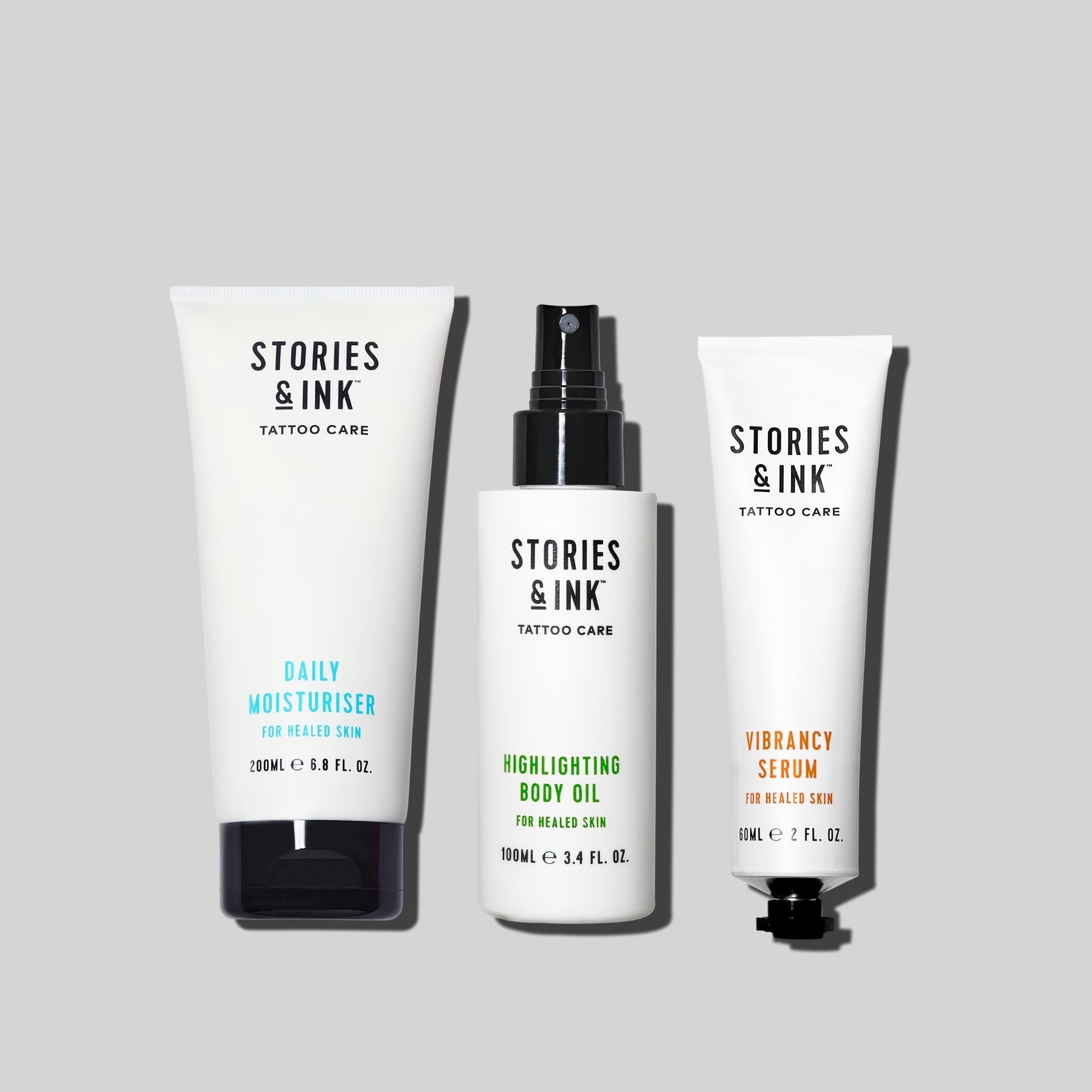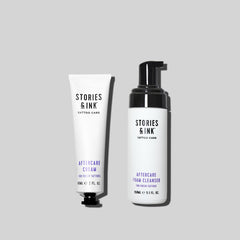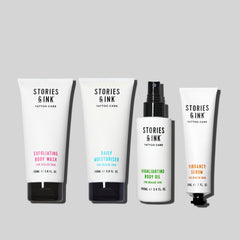Think getting tattooed is the hard bit? Then comes the healing: the dreaded new tattoo itch, the constant care of what’s effectively an open wound, the scabs, the dryness... Why do we do this to ourselves again?
Picture the scene: You’re sitting in the tattooist's chair, they’re putting the finishing touches to your ink, the skin on your [insert body part here] is raw and sore, then the tattooist wipes (shudder) your tattoo before wrapping it in cling film…questions whirl through your mind: when do I take this cling film off? Do I reapply it? Do I need to clean the tattoo? What about cream? And wtf is cling film even for anyway?
So before you end up down a Reddit rabbithole, we’ve asked the experts what happens once your pretty new ink is safely tucked up in its cling-film bandage? It turns out, not all tattooists think the same, who’d have thought that cling film could cause controversy? Wrap yourself up and settle in for a deep dive into new tattoos and cling film…
DISCLAIMER: always follow the instructions given to you by your own tattoo artist.
Why do we wrap tattoos in cling film?
Tattoos are an “open wound”, explains tattoo artist Liv Farrington, who owns The Gilded Rook, Chesterfield. “Cling film creates a barrier to keep out anything that could cause an infection or upset the tattoo with unwanted bacteria.” Think about it, you wouldn’t want your oozy tattoo to touch your clothes or leave it open to the elements. The cling film protects it from dust, dirt, pet hairs, clothing – it stops anything sticking to it. “Even rainwater getting into a new tattoo can cause problems!” says Liv.
“Cling film is used to protect the fresh tattoo from contact with objects or surfaces,” echoes tattooist Sarah Louise, who works at Sacred Coven, Nottingham. “It’s applied, usually with surgical tape, after the tattoo session as a start to the aftercare process.” But she warns, it’s only temporary.
“Scabs are basically how we heal our skin, they’re a barrier,” explains tattooist Dexter Kay, who works at Inkhouse, London. “However as a scab forms, it can push the tattoo ink out. An easy way to stop this is to put an artificial skin barrier over your tattoo – and that’s where cling film comes in.”
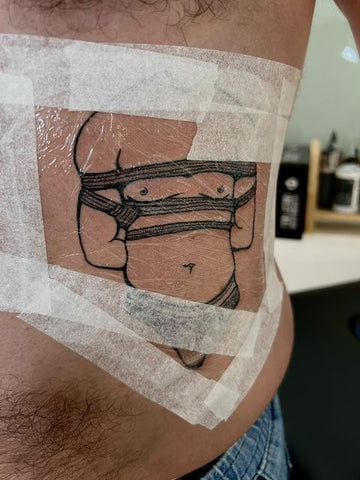
Tattoo by Dexter Kay
So, how long should you keep the cling film on for?
“I‘ll recommend to keep the tattoo covered with cling film for anywhere between two and four hours,” advises Sarah. Liv’s in agreement, “a few hours gives any soreness time to settle and excess plasma/ink – that gooey stuff! – to leave the tattoo before it’s ready for a good wash.” But, Liv warns, every artist will suggest different aftercare methods and time frames may vary. “After a customer has had a few pieces tattooed, they usually have a better understanding of what works for their own skin healing wise and do what they think works best for them,” she says.
Dexter says that the new tattoo needs to be wrapped for 48 hours in total, but not in the same cling film…
Rewrapping the tattoo in cling film – how/if to do it
“Cling film is a non-breathable material,” explains Dexter. “If it’s left on for long periods, it will get infected. I recommend changing the cling film four times a day – breakfast, lunch, dinner and before you go to bed.” But you must wash the tattoo each time, using warm water and a mild soap – our aftercare foam wash is gentle for this purpose. “Always wash your hands first and never reapply the same cling film. Pat the tattoo dry with a clean towel, then put a bit of cream on the tattoo before rewrapping it.” [May we point you to our aftercare cream.]
“Keep the original cling film on for a few hours, then wash it and pat it completely dry with a towel, then reapply fresh cling film,” agrees Liv. “I recommend rewrapping for the first three days – especially if you’re going to work. This is also a good way of saving your fave bedding from getting covered in goo!” But, in contrast to Dexter, Liv says that you should never put any cream under the cling film. “If cream is on the tattoo while wrapped in cling film it can fester and cause upset to the skin.”
Controversially, Sarah doesn’t usually recommend putting cling film back on the tattoo at all. “In most cases, I won’t recommend recovering the fresh tattoo in cling film,” she says.

Tattoo by Sarah Louise
What are alternatives to cling film?
Both Liv and Sarah recommend alternative barriers to cling film, something that Liv calls a “sticky wrap.” Saniderm and Butterluxe Derma Protect are examples. “They were originally created to help heal skin for anyone with burns or wounds,” says Liv, so they’re medical grade. Unlike cling film, you can leave it on for three days – although it’s the same time scale, you don’t need to take it off at all. “The gooey stuff that sits in the wrap is the same stuff that you'd wash off if you use cling film, however with the sticky wrap, it creates an ink sack, later drying out under the wrap or finding its way out while you're asleep.”
But what if it starts to fall off? “Then remove it completely and give it a wash,” says Liv.

Tattoo by Liv Farrington
When can you apply aftercare cream to your new ink?
When the cling film stage is over with – which, as discussed above, could be anything from a few hours to three days – what then? “Wash your tattoo a couple of times a day for at least a week to finish off the healing process,” says Liv. “The better the aftercare, the better the tattoo will heal. Every time it’s washed, pat dry and apply a small amount of aftercare cream – don’t go overboard. This helps with the itchy stage while the skin is growing back over the tattoo, it can relieve any tightness in the skin, too.”
Dexter recommends applying a bit of after-care cream every time the tattoo feels dry. And hopefully within a week the tattoo should be feeling good.
Looking after your tattoo long-term
Once the healing is over – that means no scabs at all – your tattoo still needs looking after to keep it looking beautiful. It’s an investment after all, a special piece of art. Tattoos and sun, for example, aren’t friends. “Always wear sunblock on your tattoos when it’s sunny or when you’re at the beach on holiday,” says Dexter. “Sunlight breaks down the pigment in your tattoo.” Once your tattoo is months or even years old, you can keep it vibrant with our exfoliating body wash and highlight it with our oil for special occasions. Look after your tattoos like you look after your skin… moisturise, clean and protect.
And remember your first tattoo will always cause the most worry. As your collection grows you'll stress less and learn what works for you and your body.
